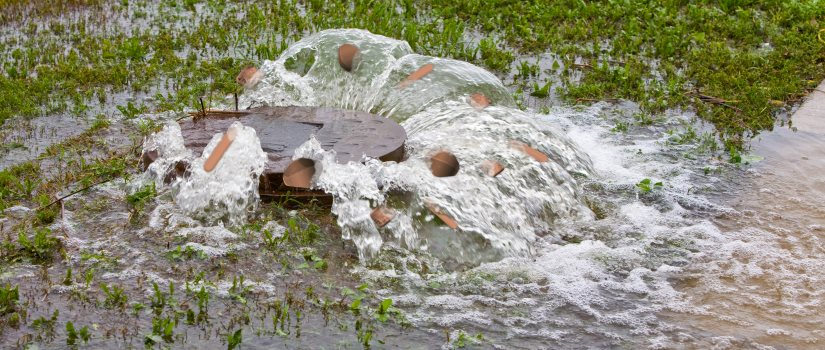March 19, 2019 | Erin Bluvas, bluvase@sc.edu
Sewage spills are a major source of releasing titanium dioxide engineered nanoparticles into the environment, according to recent research conducted at the South Carolina SmartState Center for Environmental Nanoscience and Risk (CENR). The study was led by Mohammed Baalousha, an associate professor of environmental nanoscience in the Arnold School of Public Health’s department of environmental health sciences, and published in Environmental Science: Nano—as a cover article, demonstrating the study’s significance to the field as determined by the journal’s editors and reviewers.
A rapidly growing industry, nanotechnology boasts high production volumes of engineered materials and global markets worth hundreds of billions of dollars. Titanium dioxide nanoparticles, for example, are the most widely produced and used type of engineered nanoparticles. However, the dominant use of titanium dioxide is as pigment in paint and coatings.
Scientists have developed hundreds of uses for engineered nanoparticles, including titanium dioxide applications such as cosmetics, toothpaste, sun blocks, and food additives—all of which are likely to end up in municipal wastewater. Despite advancements in understanding nanotechnology as a result of research by groups like CENR, measuring the amount of engineered particles in the environment poses challenges with regard to their detection and quantification.
These challenges include high background concentrations of natural nanoparticles, low environmental concentrations of engineered nanoparticles, similarities in properties, composition and transformation across particle types, and inadequate methodologies. To solve these problems, Baalousha and his team developed a multimethod approach to identify, quantify and characterize titanium dioxide engineered particles found in surface waters, which paves the way for routine monitoring of engineered particles in environmental systems. Through their assessments, they found that sewage spills release high concentrations of these particles into the environment.
“Sanitary sewer overflows are a common problem across the United States,” says Baalousha. “In 2004, an estimated 23,000 to 75,000 of these overflows occurred across the United States, discharging between 11 and 38 billion liters of untreated wastewater into receiving waters, such as rivers, lakes, oceans, and streams. Sewage overflows release many contaminants including engineered nanoparticles which results in a direct route for release of titanium dioxide engineered particles to surface waters.”
As a result of this study, the authors have identified sanitary sewer overflows as hotspots for titanium dioxide engineered particles. Aquatic organisms living in waters receiving these overflows experience an immediate impact while marine and freshwater environments can be affected when these particles travel through river water.
Further, humans are exposed to untreated sewage through recreational activities and/or ingesting contaminated water/fish/shellfish. Columbia, South Carolina, where the study took place, is especially vulnerable due to its aging sanitary sewer systems, which make overflows a chronic issue.
Related:
ENHS and CENR’s Mohammed Baalousha joins Faculty Early Career Awardees
Mohammed Baalousha chairs the 19th International Symposium on Field- and Flow-Based Separations
Nanoscience researcher named to impressive list of investigators
Baalousha and Lead edit special issue on modelling for Environmental Science: Nano
